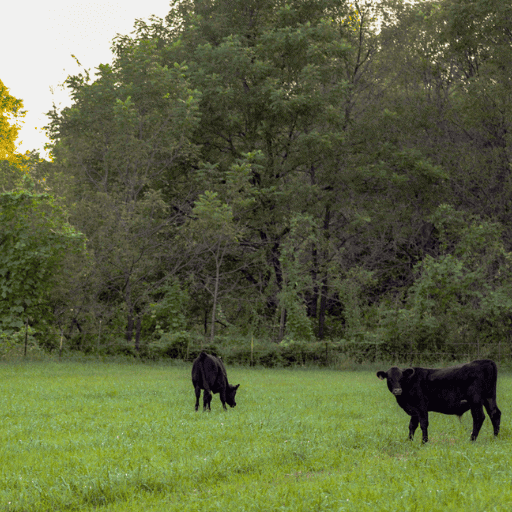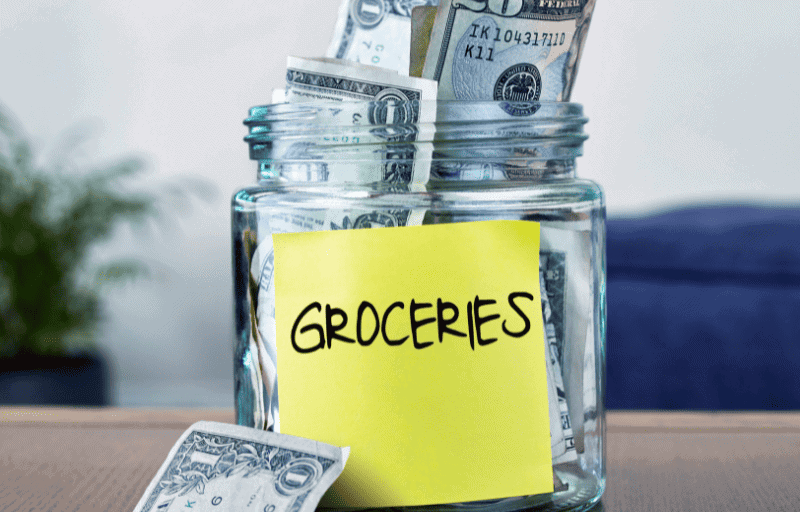When you think about saving money on your groceries, do you immediately envision rice and beans or the end of dessert and ice cream? There is good news! These 5 tips improve the taste of your food in simple ways that will surprise you. I also share 5 ways to save money while eating healthier. These tips really work. Why? Because you learn how to buy affordable healthy ingredients. Even more importantly, I share the effects of common preservatives like bleach found in much more than flour upon your blood sugar.
The “how” may cause you to pause, because you like the mental ease of reaching for that box of mix, a carton of ice cream, or the prepared dinners in the freezer section.
So, the question becomes, do you want to pay for a box containing a plastic bag of premeasured dry ingredients like flour, sugar, salt, baking powder or soda, and preservatives? Do you want to pay for someone to pick out your vegetables, measure your seasonings, and spice up your meat?

When I realized I was paying for cardboard, plastic, and someone’s labor, I decided to pay myself by shrinking the cost of our grocery budget. Saving money while eating healthier is a great motivator. Are you thinking about the physical work and time? If so, realize that this workout versus going to the gym gives you delicious, healthy food at a more affordable cost. Best of all, memories made baking and cooking with my children, spouse, and grandparents are priceless.
Improve Your Health
When I decided to stay home to raise our 3 toddlers, I knew I needed to save money and improve my gut health. My pregnancies were difficult. Thus, I began to search for ways to heal my gut. I read an amazing book called What the Bible Says About About Healthy Living. The author, Rex Russell, M.D., investigated our foods trying to recover his own health.
One common food I investigated is flour used to make bread, noodles, wraps, deserts, etc…
According to Health Research Funding, HRF, bleach lowers the protein count in flour and produces a toxic chemical called Alloxan. Researchers found:
Alloxan is linked to the onset of diabetes. It is used during diabetes related lab tests in order to create the disease in the bodies of rats. Even worse than this is the loss of valuable nutrients during the bleaching stages.
https://healthresearchfunding.org/bleached-versus-unbleached-flour/
Does that store-bought loaf of white bread made from bleached flour still sound good and nutritious?
The simplest change I made was removing bleached salt, sugar, and flour-based products from our diet. After just one month, the change in our taste buds was a surprise that I still remember 27 years later. Amazingly, my husband and I noticed more flavors in our vegetables. I believed we healed the taste buds on our tongues.
Save Money with Affordable Organic Ingredients
Organic ingredients are more affordable when bought in bulk, through food co-ops, from farm stands, or grown in a container garden or backyard. The effort is worth your time. To illustrate, here is a memory.
After our family moved to another state, my young children stopped eating their vegetables. Where we used to live, we grew our vegetables in a fenced-off section of our backyard. But after we moved, my husband’s increased earnings made me think I did not need a garden. That is until my children began to complain there was no taste in their store-bought vegetables. Then, I became very motivated to grow our vegetables.
A Baking Memory that Saves Money
When you bake using ingredients, you save money. Even better, each recipe I share gives you enough freshly baked food to enjoy now and freeze or refrigerate for later. When all my children were home, I used two mixing bowls yielding 4 to 6 loaves of delicious bread like pumpkin spice bread. I often blessed a sick neighbor or elderly friend with one of my homemade loaves of bread. Now, I am sharing my gluten and dairy free recipes in an easy to follow visual presentation that helps me.
A Baking Grandparent Memory
Cooking and baking with my Grandmother taught me all those secrets often not found in recipes. I recall one memory very clearly.
After I learned to bake a loaf of chocolate chip banana bread, I remember calling Grandmother in tears. My loaf stuck to the pan in one place causing it to break apart as I flipped it out onto a cooling rack. Grandmother asked me with surprise in her voice, “Did you use parchment paper?”. My reply answered her question, “What is that? “. It is amazing what others who write recipes assume we already know. That is why I am very careful to label each one of my recipe pictures with measurements and share tips to give you that perfect texture and taste.
My picture-by-picture recipes share baking and cooking tips like the importance of lining pans with parchment paper. Then, your baked goods easily flip out of their baking pan onto the cooling rack without falling apart. Did you know that parchment paper also prevents the bottom of the pan from scorching the bottom of your bread?
Recently while cooking with my daughter, I learned about the existence of unbleached parchment paper. Yuck! Darn, I never thought about why the paper was white. Who wants bleach leaking into their freshly baked, organic bread?
5 Ways to Save Money While Cooking Healthier
1. Mill Grain into Flour
Once we bought essential equipment like a grain mill it actually put money back into our budget. My last mill, the Wondermill, was 20 years old when it was destroyed by mold. The silver lining is that my newest mill, the Mockmill, turns the tiniest grains, like millet, into flour. When you mill grain into flour, you avoid bleach and also reap all the health benefits of freshly milled flour.

I encourage you to learn about mills and organic, non-GMO grains that are gluten free or low gluten in my blog, Why Milling Grain Enhances Your Life and Saves Money. It only takes seconds to touch a button and a minute to have all the flour you need.
Throughout my recipes, I share health tips that keep your baked goods high in fiber.
2. Use Healthy Cooking Sprays and Oils
Have you ever wondered what propels oil out of aerosol cans? In the old days, cooking oil was spread onto baking pans using a small piece of cloth or paper towel. Today, you can choose between aerosol cans that spray oil or pump sprays. Aerosol cans like Pam use propellants like butane or propane.
Since we are the summary of what we eat, I believe that each small change culminates into health improvements. Thus, I now use a pump spray like Pompeian Organic Extra Virgin Olive Oil or spread oil the old fashion way with a small piece of paper towel.
Another change you can make is to learn what oils are best for frying and baking.
3. Save Money with Bulk Purchases and Freeze Healthy Ingredients
Cheese
There is a way to save money, prevent your cheese from spoiling, and save time while cooking. Save money by purchasing cheese in a larger quantity. When you buy 1 or 2 pound blocks, the price per unit goes down. Depending on the size of your family, that can be a lot of cheese! If you don’t use it quickly enough, it molds. The money you saved goes into the garbage. What can you do? Grate all or most of it. Then, freeze it in a zip-lock freezer bag. Leave some air and lay the bag on its side to minimize clumping. Once frozen, I shake the bag to break up the clumps, remove the air, and place it back in the freezer.
What a time saver to only wash the grater once!
Now, your frozen cheese is ready to throw in just about any dish. It only takes a few minutes to thaw on top of a salad, spaghetti, or melt in a dish. You have eliminated a step in making dinner and you saved money! Also, you avoided store bought cheese covered in an anti-caking agent. Our family says The taste of freshly grated cheese is so much better!
Most importantly, learn about the different types of cheese so you can meet your health needs.
Importance of Real Butter
When my food journey started 27 years ago, I used sticks of butter called margarine. At that time, I had no idea that margarine is a trans-fat, increasing the risk of heart disease. After reading the book I mentioned earlier, I thought about the temperature of our bodies and tested the amount of heat required to melt margarine. I needed more heat than my body temperature. Not good! Goodbye margarine.
Because I cannot eat dairy, finding an alternative butter that everyone liked was a must. When Smart Balance tub butter became available, I like it so much that I ignored the fact that one of the first ingredients is canola oil. That is until a friend kindly remarked that I should avoid canola. What I read made me say, “Oh no! Time to change my butter once again.”
Canola, A Genetically Modified Plant
Canola is a genetically modified plant also called a genetically modified organism (GMO) that resists pesticides (weeds & pests). After a bit of reading, this is what I understand. Scientists concluded that although there is an increased risk of cancer, without GMOs and pesticides there is an even greater risk of crop failure and world hunger. Most surprising, GMOs have led to a decrease in the usage of pesticides because the plants are now naturally protecting themselves from pests. Thus, more time must pass before scientists fully understand the full effect of GMO crops on humans. Meanwhile, I am choosing to avoid canola oil.
One vegan butter I found without canola oil is MIYOKO’S CREAMERY, a European-style cultured vegan butter that is also organic with a hint of sea salt. Where can you buy it? Use their store finder to locate this product near your home. I found it at Target and Walmart, which are national chains. I also like to use Ghee butter in certain dishes. However, this is a topic I will save for another time.
4. Purchase Meat from a Local Butcher or Rancher
When I go to the butcher, I always buy enough meat for about a month. Once home, a few hours of work in the kitchen helps me more quickly prepare future meals. For example, I purchase 10 pounds of ground beef. When I arrive home, I season a third of the ground beef with spices for tacos, cook the meat, and let it cool on a paper towel. This drains the grease away from the meat. The next third is seasoned for Italian meals like spaghetti and lasagna. What is left becomes a delicious meatloaf.
Purchasing a whole chicken and cutting it up yourself also saves money. However, you need to prevent freezer burn. When freezing cooked meat, completely cool the meat. Once cool, wrap the meat in parchment or wax paper and then seal it as tightly as possible in a zip lock bag. To maximize the space in your freezer, Lay the bag of meat as flat as possible so that it can be stacked neatly.

Buy a Whole or Half a Cow
Are you worried about the increasing cost of meat and your grocery budget? You save money and purchase higher quality meat when you buy a whole or half of a cow. The butcher allows you to choose the fat content of your ground beef, the size of a roast, and the thickness of a steak. If a half of cow is still too much meat for you, ask a family member or close friend to split the meat and the cost with you. To find a rancher near you Goggle pasture-raised cows. If you live in Virginia, you can order a pasture-raised cow at https://hollinfarms-433430.square.site
Why Buy Local?
Quality. Finding a quality product is always worth the cost when you look at your food as fuel for your body and an investment in your health. While there are times you can find better deals and pricing at a grocery store for meat, you are typically purchasing a lower-quality product. Your typical package of ground beef at the grocery store comes from feedlot cattle which means they were fed a diet of grains. Grass-fed and finished cattle produce higher quality meat that is richer in nutrients such as Omega-3. Buying local gives you the power to know exactly what you are fueling your body with.
5. Buy Produce at a Farm Stand or Plant a Garden
Most of us have time to can vegetables after work at night and on weekends. What a workout with a delicious end product. All you need is 2 or 3 weekends during the summer months of July and August. Time spent with loved ones or friends can make this time in the kitchen fun. After I learned how to can a certain vegetable, I enjoyed listening to music, podcasts, and hanging out with friends in my kitchen or on the phone.
This summer, I drove to different farm stands to purchase large amounts of vegetables for canning. Sometimes, this provided me with additional savings. Since I was looking for healthy produce, I asked about their growing methods. Worms and a few bug bites are good! Why? Because then the farmer most likely avoided over-using pesticides or used organic growing methods. Now, our grocery budget will remain unaffected no matter how much food prices increase this winter.
Since I live in a hurricane-prone area increasing the risk of no electricity for days or even weeks, I can most of my food. The savings from the first year covers the cost of your canner and jars. Maximize your savings by canning every summer, and if possible, grow your own food. We live in a condo, so I bought vegetables in bulk at local farms.
How I Saved Money This Summer
30 pounds of tomatoes, green peppers, onions, and jalapeño peppers cost $28.00 dollars at a farm stand. Produce was grown as organically as possible. I made and canned:
8 quarts of organic spaghetti sauce valued at $32.00 dollars.
- Store bought organic spaghetti sauce costs $3.30 to $5.00 dollars. Using an average of $4.00 dollars times the 8 quarts that I canned gave me a value of $32.00 dollars.
10 pints of organic salsa valued at $40.00 dollars.
- Store bought organic salsa costs $3.29 to $8.00. Using an average cost of $4.00 dollars time the 10 pints that I canned gave me a value of $40.00 dollars.
*Total Savings — $50.00 dollars after expenses: seasonings, tomato paste, water, and electricity.
Another day, I bought 5 dozen ears of corn for $20.00 dollars that was freshly picked that day. The fresher the vegetable, the higher the nutritional value. I canned 14 quarts of corn and enjoyed corn on the cob for two days. There are 16 ounces in a quart.
- Average cost of a 16 oz. can of corn cost $2.00 x 28 = $56.00 dollars
*Savings was 36.00 dollars
With today’s open-concept kitchens, cooking and baking are fun. Once you learn the recipe, baking and cooking require less focus. Thus, you can sing, listen to music, a podcast, a movie, or a TV show. My favorite is baking with others using my picture-by-picture recipes. The ingredients in each picture make it easy to deal with a houseful of distractions and interruptions.
Even more baking, cooking, and shopping tips are available with each recipe and on my other health cooking blogs:







0 Comments